If you’ve ever considered growing your own avocados it’s important to know that growing avocados takes time, patience, and the right conditions. The creamy, rich fruit is a favorite of many, and having a supply of fresh, home-grown avocados would be a dream come true for any avocado lover. But before you get too excited, unless you live in a very warm area, your avocado tree won’t survive outdoors in the winter.
However, an avocado plant grown from a pit makes an attractive houseplant, even if it doesn’t produce fruit. Avocado plants have large, glossy leaves that can add a lush, tropical feel to indoor spaces. As they grow, they can develop a tree-like form, with a woody stem and branches that can be pruned to encourage bushier growth. And, if you’re patient and provide your tree with consistent care, perhaps it will reward you with a small harvest. Keep reading for your complete guide on how to grow avocados from seed to tree.
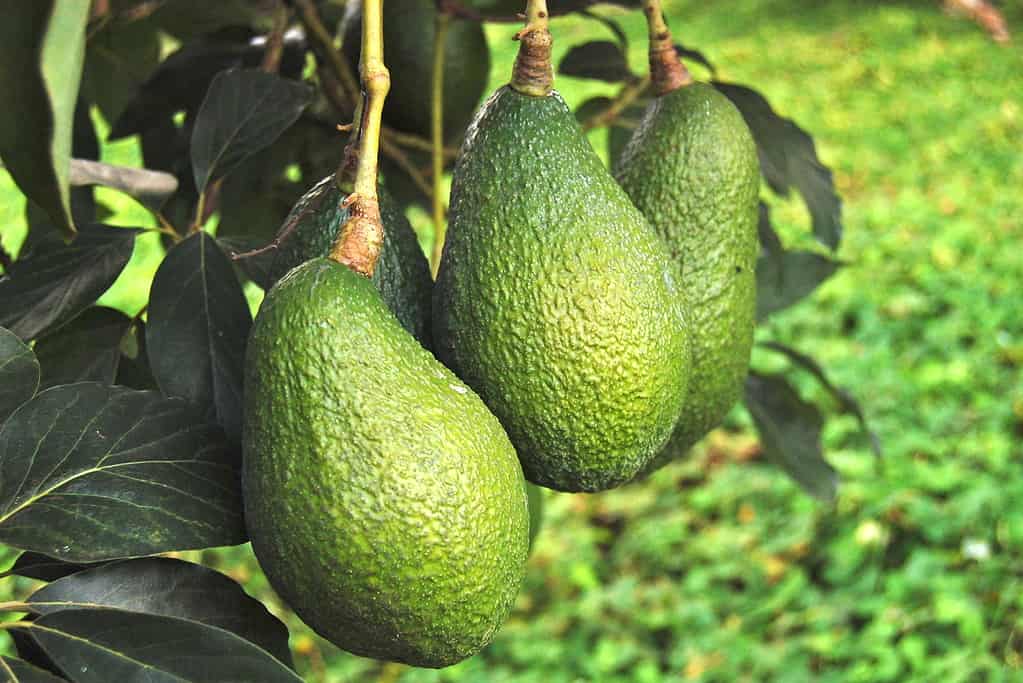
©lauraslens/Shutterstock.com
What is an Avocado?
An avocado (Persea Americana), is a fruit that grows on a tree. The avocado is unique among fruits in that it is high in healthy fats, particularly monounsaturated and polyunsaturated fats. It is also a good source of dietary fiber, vitamins C and K, potassium, and folate.
Avocados are typically pear-shaped, with a hard, textured outer skin that varies in color from green to black. Inside the skin, the flesh of the avocado is soft, creamy, and pale green to yellow in color. The fruit contains a large central pit (seed), which is discarded before eating.
Avocados are a versatile fruit that can be enjoyed in a variety of forms, including as a spread on toast or crackers, in salads, as a garnish for soups and stews, and as the main ingredient in guacamole. They have become increasingly popular in recent years due to their health benefits and versatility.
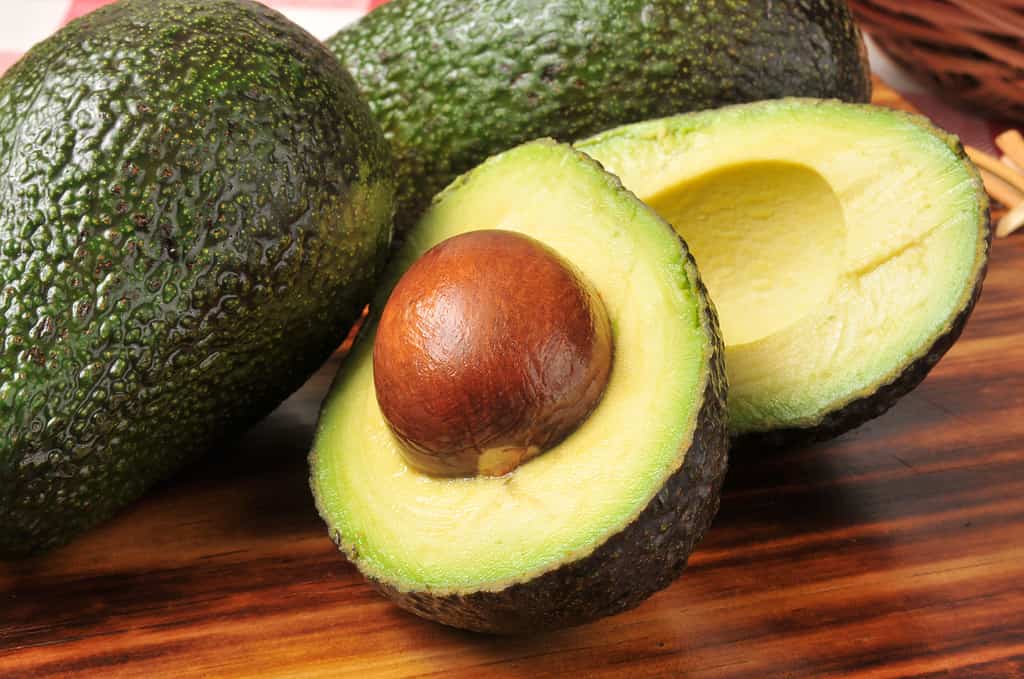
©MSPhotographic/Shutterstock.com
How to Grow Avocados: Selecting a Variety
The avocado belongs to the flowering plant family Lauraceae, which also includes cinnamon and bay leaves. There are hundreds of different varieties of avocados, with new varieties being developed through selective breeding and genetic modification. Some of the most popular varieties of avocado are:
- Hass: This is the most widely grown variety of avocado in the world and is known for its creamy texture and nutty flavor.
- Fuerte: This is an older variety of avocado that is still popular today. Fuerte avocados have a slightly more acidic flavor than the Hass.
- Bacon: This variety of avocado is named for James Bacon, the original cultivator of this hybrid. Bacon avocados do not taste like bacon!! They have thin skins and a mild, buttery flavor.
- Pinkerton: This variety of avocado has a thin, glossy skin and a rich, buttery flavor.
- Zutano: This variety of avocado has a smooth, shiny green skin and a mild, slightly sweet flavor.
These are just a few examples of the many varieties of avocados that are available. Different varieties have different characteristics, including texture, flavor, and size, which make them suitable for different culinary applications. Hass avocados are the most widely grown variety in the world. Known for their creamy texture, rich flavor, and long shelf life, they are also a popular variety for home gardeners, as Hass avocados are relatively easy to grow and they produce high-quality fruit.
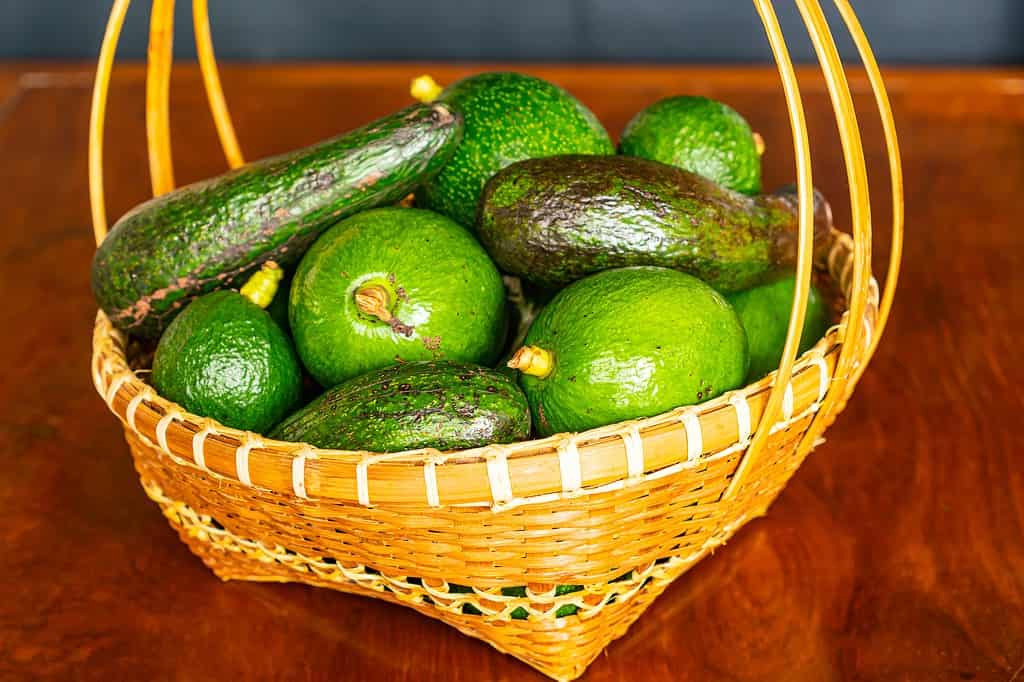
©takepicsforfun/Shutterstock.com
How to Grow Avocados: Rooting the Seed
Growing an avocado tree from a pit is a fun and rewarding project, but it can take several years before the tree starts to produce fruit. In fact, it can as many as 13 years for an avocado tree started from a pit to produce fruit. So, if you’re hankering for guacamole now, it might make more sense to purchase a couple of avocados. However, if you are looking for a long-term commitment that will reap immeasurable benefits down the road, the first step is rooting the pit (seed).

©AnkaFed/Shutterstock.com
Step-by-Step Guide for Rooting the Pit
Rooting an avocado pit is a fun, interesting activity, even if you have no intention of growing it into a mature, fruit-bearing tree. The process of rooting is the same whether you’re planting a viable grove or an ornamental houseplant:
- Remove the pit from the avocado: Using a knife carefully cut the avocado in half and remove the pit. Be careful not to damage the pit, as this can affect its ability to sprout.
- Clean the pit: Use a soft-bristled brush to gently clean any remaining flesh from the pit. Be careful not to remove the brown, papery skin that covers the pit.
- Insert toothpicks: Use three or four toothpicks to suspend the pit over a glass or jar of water. Insert the toothpicks about halfway up the pit, being careful not to puncture the seed.
- Place in water: Fill the glass or jar with water so that the bottom of the pit is submerged. Be careful not to cover the top of the pit with water.
- Wait for the pit to sprout: Place the glass or jar in a warm, bright location and wait for the pit to sprout. This can take anywhere from a few weeks to a few months, depending on the temperature and humidity of your location.

©Olya Detry/Shutterstock.com
Planting in Soil
Once the pit has sprouted and grown roots, you can plant it in soil. Choose a container with drainage holes and fill it with a high-quality organic potting mix. Plant the avocado pit so that the top of the pit is level with the soil surface and water it regularly.
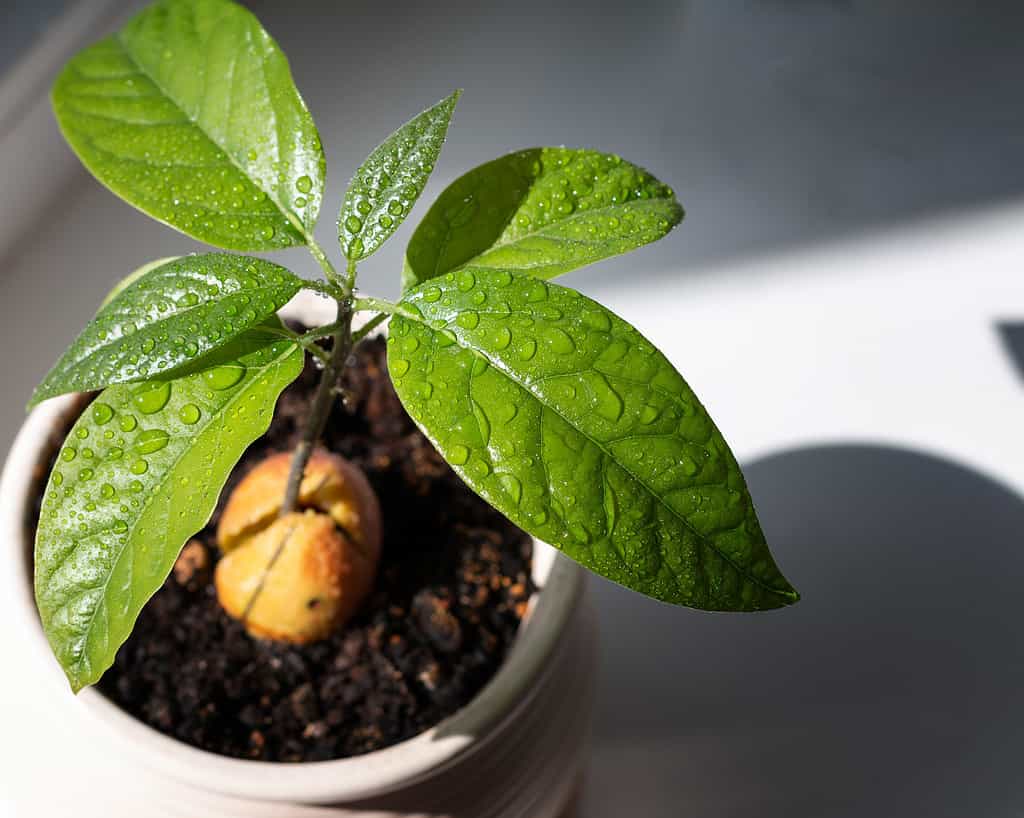
©Chalysheva Ekaterina/Shutterstock.com
How to Grow Avocados: Outdoors
To plant an avocado outdoors, wait until the seedling has grown into a small tree with a woody stem and a few sets of leaves, typically around 6-12 inches (15-30 cm) tall. At this stage, the avocado plant is more likely to survive transplanting and establish itself in its new location.
Here are the steps to plant an avocado tree outdoors:
- Choose a location: Avocado trees need full sun and well-draining soil, so choose a spot in your garden that receives at least six hours of sunlight a day and has good drainage.
- Prepare the soil: Avocado trees prefer slightly acidic soil with a pH between 6 and 6.5. If your soil is too alkaline, you can add sulfur or peat moss to lower the pH. Learn more about soil pH here. Dig a hole that is slightly larger than the root ball of your plant.
- Transplant the seedling: Gently remove the avocado plant from its pot, being careful not to damage the roots. Place the plant in the hole and backfill it with soil, making sure the plant is level with the ground.
- Water the plant: Give the plant a thorough watering, making sure the soil is moist but not waterlogged. Water the tree regularly, especially during the first year of growth.
- Provide support: Avocado trees can be top-heavy, so it’s a good idea to stake the tree or provide some support until it establishes a strong root system.
- Mulch the soil: Cover the soil around the tree with a layer of organic mulch, such as wood chips or leaves, to help retain moisture and suppress weeds.
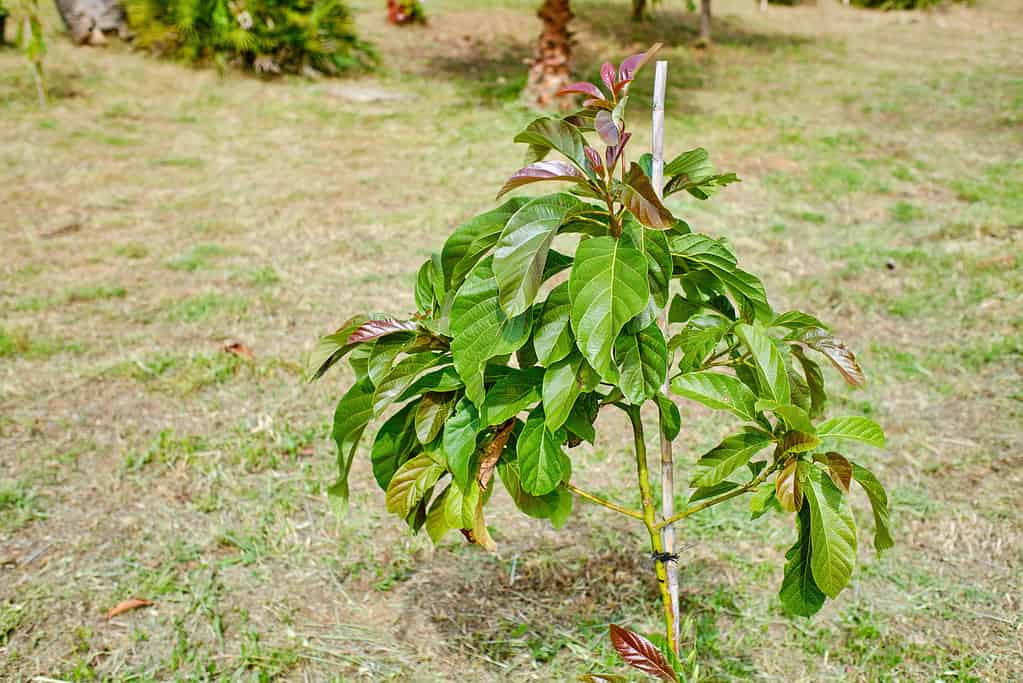
©Robalito/Shutterstock.com
Caveat the Cold
Remember that avocado trees are sensitive to frost and cold temperatures, so if you live in an area with even moderately cold winters, you will need to protect the tree during the winter months with frost blankets or other coverings. Avocado trees require a warm, humid climate with plenty of sunlight. In areas with cooler climates and shorter growing seasons, it takes longer for an avocado tree to mature and produce fruit. If you are growing an avocado tree from a pit, it’s best to be patient and enjoy the tree as a decorative plant.
How to Grow Avocados: Indoors
While there is no guarantee that it will produce fruit, a healthy and well-cared-for avocado tree can be a beautiful addition to an indoor space. Avocado trees are tropical plants that can grow up to 40 feet (12 m) tall in their natural habitat. Therefore, growing them indoors requires providing them with the right conditions including adequate light, temperature, humidity, and soil.
Indoor avocado trees need bright, direct sunlight for at least six hours a day, and they prefer temperatures between 60°F to 85°F (15°C to 29°C). They also need well-draining soil with good aeration and regular fertilization. Maintaining the right level of humidity can also be a challenge, as avocado trees prefer a humid environment.
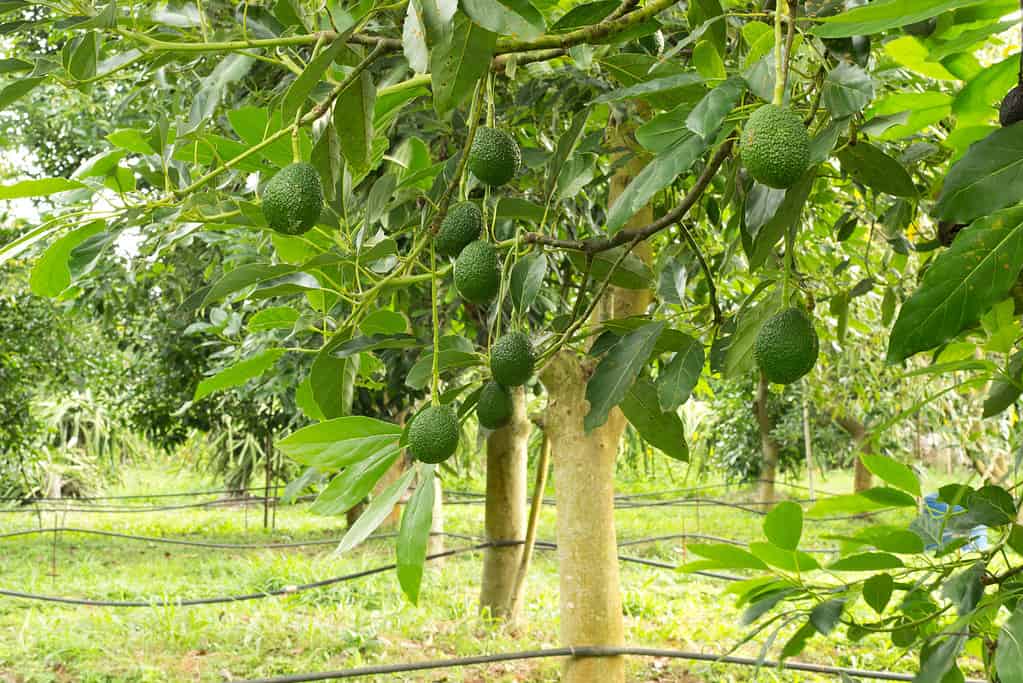
©joloei/Shutterstock.com
How to Grow Avocados: Indoor Planting Guide
- Choosing a pot: Select a container that is large enough to accommodate the avocado tree’s roots as it grows. The pot should have drainage holes at the bottom to prevent waterlogging.
- Filling the pot: Fill the pot with a well-draining potting mix, leaving enough space at the top for the avocado seed to fit in.
- Removing the seed: Remove the avocado seed from the glass of water and carefully remove any remaining toothpicks.
- Planting the seed: Plant the seed in the pot with the rooted end submerged in the potting mix. The top of the seed should be level with the soil surface.
- Watering the soil: Water the potting mix thoroughly until the excess water starts to drain out of the bottom of the pot. Be careful not to overwater the plant.
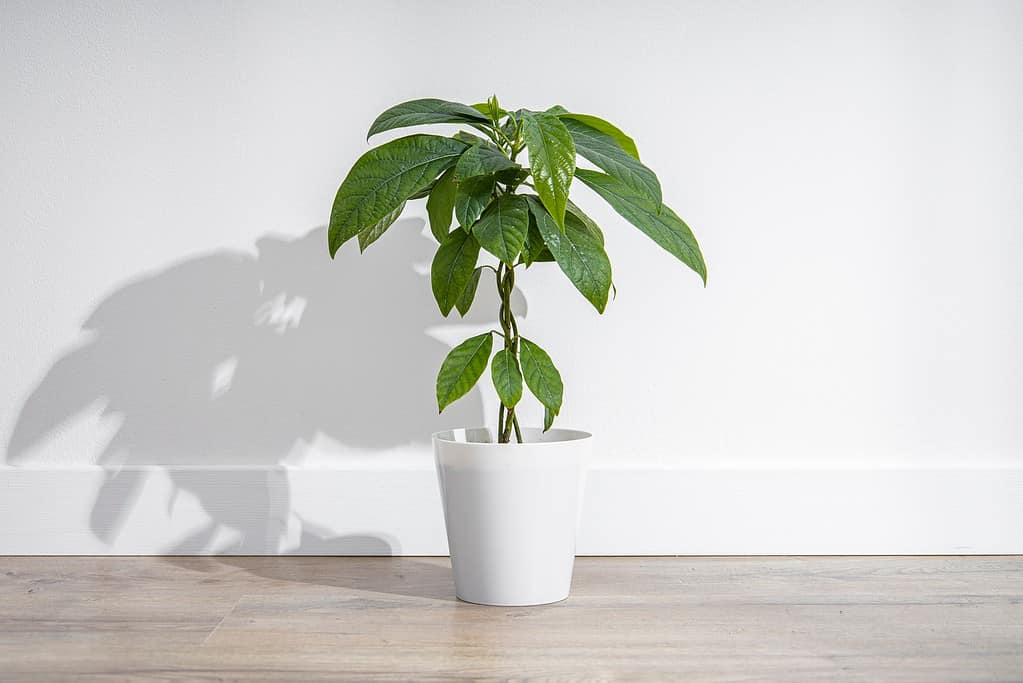
©Alex SG/Shutterstock.com
How to Grow Avocados: Indoor Growing Guide
Once the seed has been planted in the soil, place the pot in a warm and sunny location. Avocado trees require a lot of sunlight to grow, so place the pot in a sunny location near a window. The temperature should be kept between 60-85°F (16-29°C). Keep the soil evenly moist, with less frequent watering during the winter. Applying a balanced fertilizer in the spring will aid your tree’s growth. As your tree matures, it may require pruning to remove dead limbs and maintain its shape. Also of note: Though avocado trees are self-pollinators, meaning that they do not require cross-pollination with another tree. If you have an indoor tree that is mature enough to bear fruit, you can help the pollination process along by giving your tree a little shake to help spread the pollen in the absence of the bees or the wind, which typically do the job!
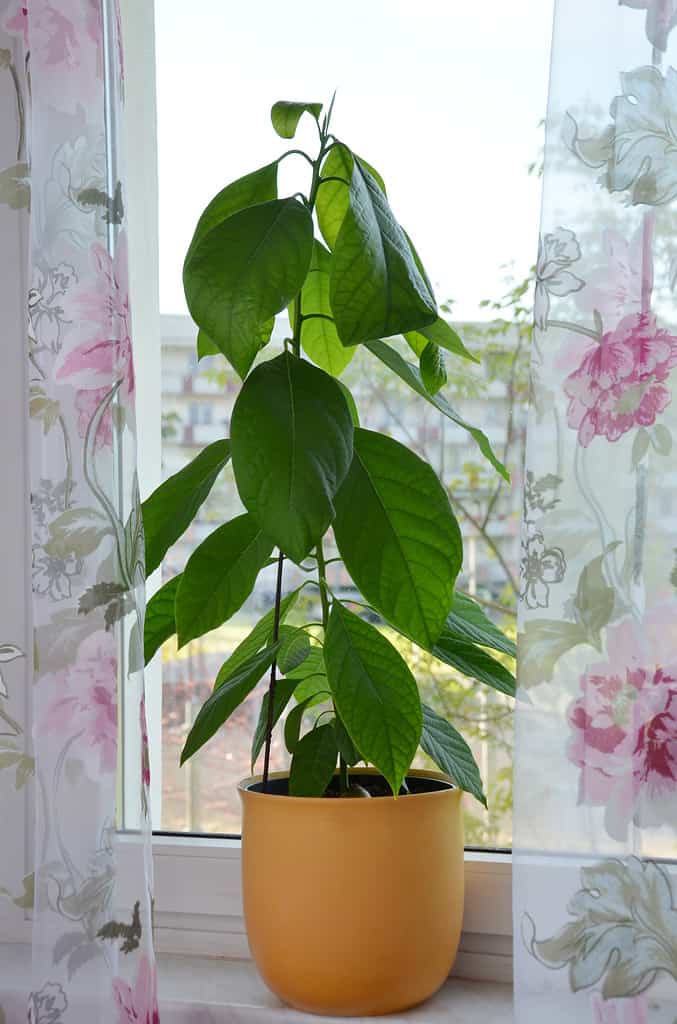
©OLA2015/Shutterstock.com
How to Grow Avocados: Requirements
Avocado trees are tropical plants that require warm temperatures and do not tolerate frost or freezing temperatures. As a result, avocado trees can only grow outdoors in areas with mild and warm climates, typically in USDA Zones 9 to 11. Learn more about USDA Hardiness Zones and which one you live in here. Specifically, avocado trees thrive in areas with mild winters and warm summers, where temperatures generally do not drop below 28°F (-2°C). The ideal temperature range for avocado growth is between 60°F to 85°F (15°C to 29°C). In the United States, avocado trees can grow outdoors in Southern California, Southern Florida, and Hawaii, as these areas fall within USDA zones 9 to 11. Elsewhere in the U.S. avocado trees are grown as indoor ornamentals.
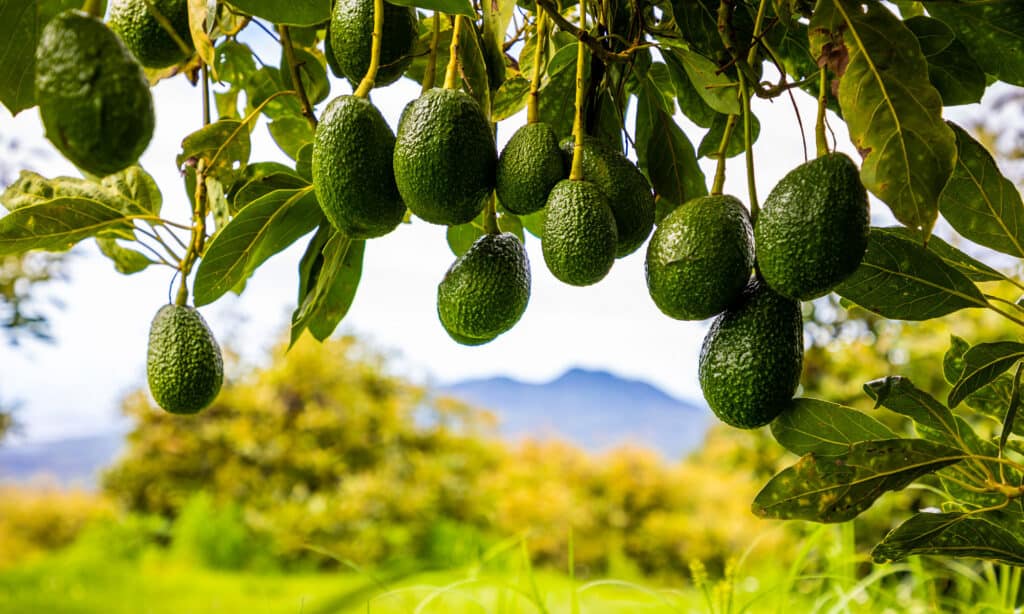
©Alexis Foto Guevara/Shutterstock.com
Five Fruity Facts about Avocados
- Avocados are a fruit, not a vegetable. Specifically, they are classified as a berry.
- Mexico produces more avocados than any other country. They produce almost half (45%) of the world’s avocados!
- Avocados do not begin to ripen (soften) until after they are harvested (picked).
- Avocados can be used as a substitute for butter or oil in baking recipes, as they add moisture and richness without saturated fats.
- Though avocados are relative newcomers in the U.S., Mesoamericans have been eating avocados for 10,000 years.
The post How to Grow Avocados from Seed to Tree: Your Complete Guide appeared first on AZ Animals.
from Animal News, Facts, Rankings, and More! - AZ Animals https://ift.tt/Fusq8t0